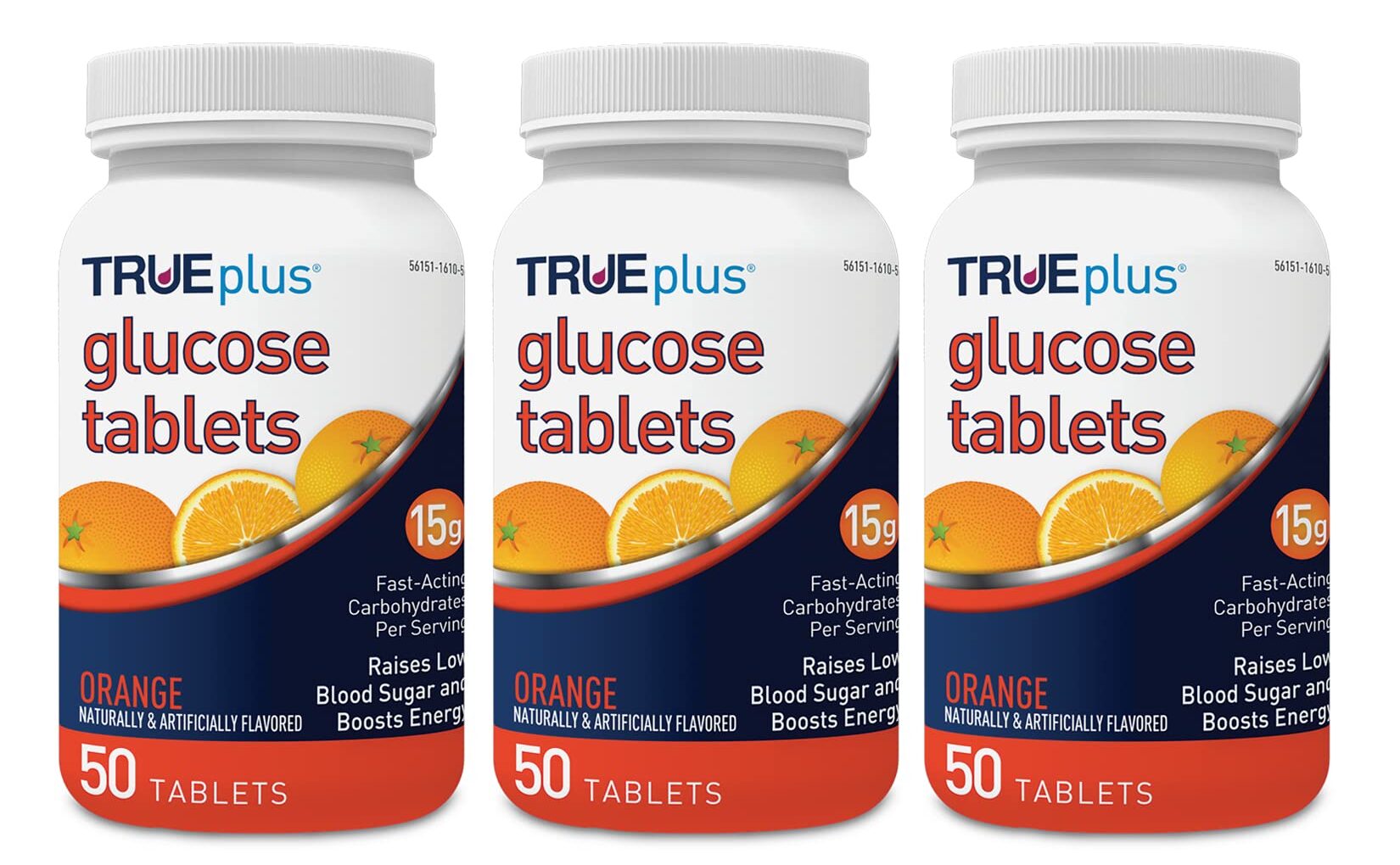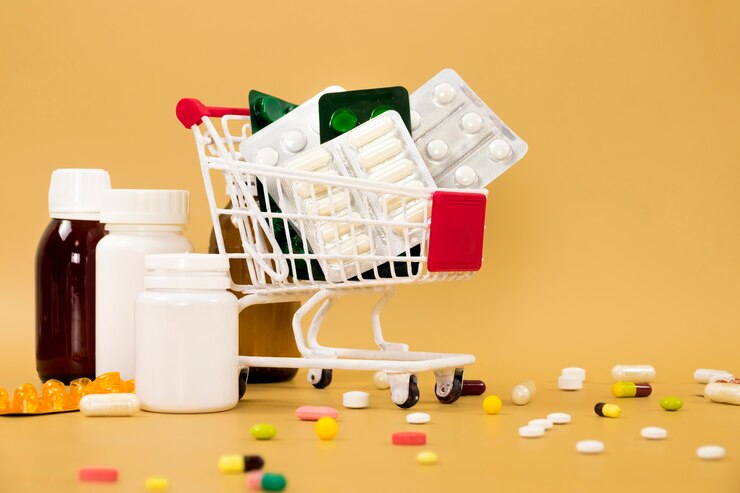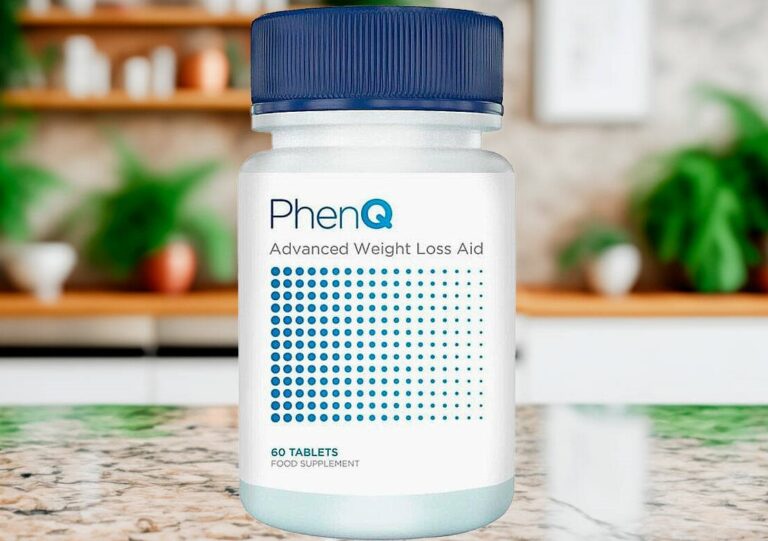Glucose Tablets vs. Other Low Blood Sugar Treatments: Which is Best?
Low blood sugar can be a real buzzkill. It hits you out of nowhere, leaving you feeling shaky, weak, and downright hangry. But fear not, because there’s a sweet solution that can come to your rescue: glucose tablets! These little powerhouses are like tiny superheroes for your low blood sugar woes. In this article, we’re diving deep into the world of glucose tablets versus other low blood sugar treatments to find out which one reigns supreme. So buckle up and get ready for some sweet knowledge!
What Are Glucose Tabs?
Glucose tabs, also known as glucose tablets, are small and portable tablets that contain a concentrated dose of sugar in the form of dextrose. Dextrose is a type of sugar that quickly raises blood sugar levels when consumed. These little powerhouses are specifically designed for individuals who experience low blood sugar, also known as hypoglycemia.
When you’re feeling those dreaded symptoms of low blood sugar like shakiness, dizziness, or confusion, reaching for glucose tabs can be a game-changer. They provide a fast-acting source of carbohydrates that rapidly enters your bloodstream and helps to raise your blood sugar levels back to normal. Plus, they come in handy packaging that you can easily carry with you wherever you go! No more searching for sugary snacks or relying on unreliable sources when you need them most. Glucose tabs have got your back!
What Is Glucose?
Glucose is a type of sugar that serves as the primary source of energy for our bodies. It is a simple carbohydrate that can be found in many foods, including fruits, vegetables, and grains. When we eat these foods, our bodies break down the glucose molecules into smaller units that can be absorbed into the bloodstream.
Once in the bloodstream, glucose travels to various cells throughout the body to provide them with the energy they need to function properly. This energy is especially important for organs like the brain and muscles, which require a constant supply of glucose to carry out their tasks efficiently. Glucose plays a crucial role in fueling our bodies and ensuring optimal functioning on a cellular level.
Symptoms of Hypoglycemia
Hypoglycemia, or low blood sugar, can cause a range of uncomfortable symptoms. It’s important to be aware of these signs so you can take action quickly. Some common symptoms include shaking, sweating, dizziness, confusion, and irritability. You may also experience weakness or fatigue, headaches, blurred vision, or difficulty concentrating.
If you notice any of these symptoms coming on, it’s crucial to address them promptly. Ignoring them could lead to more severe complications. Keep reading to learn how glucose tablets can help in treating hypoglycemia and prevent further issues!
How to Use Glucose Tabs
Using glucose tablets to treat low blood sugar is quick and easy. When you start experiencing symptoms of hypoglycemia, such as shakiness or dizziness, grab a few glucose tabs and chew them thoroughly before swallowing. These small tablets are designed to dissolve quickly in your mouth, providing a rapid source of sugar for your body.
It’s important to follow the recommended dosage instructions on the packaging. Typically, one tablet contains around 4 grams of glucose, but be sure to check the label for specific information. Start with one or two tablets initially and wait about 15 minutes to see if your symptoms improve. If your blood sugar levels still haven’t risen after that time, you can take another tablet and continue monitoring yourself closely.
Always keep a supply of glucose tabs with you wherever you go so that you’re prepared in case of an emergency. It’s also essential to store them properly by keeping them in a cool, dry place away from direct sunlight or extreme temperatures. By knowing how to use glucose tabs effectively and having them readily available when needed, you can confidently manage episodes of low blood sugar and ensure your well-being!
Purchasing and Storing
When it comes to purchasing and storing glucose tablets, there are a few things to keep in mind. First, make sure to check the expiration date before buying them. You want to ensure that you have fresh tablets on hand in case of an emergency.
When storing your glucose tablets, it’s important to keep them in a cool and dry place. Avoid exposing them to excessive heat or moisture as this can affect their potency. It may be helpful to have multiple containers of glucose tablets so that you can keep them easily accessible at home, work, or when you’re out and about.
A Word From Verywell
At Verywell, we understand that managing low blood sugar can be challenging. That’s why we believe it’s important to have reliable and effective tools in your arsenal, such as glucose tablets. These simple yet powerful tablets provide a quick and convenient way to raise your blood sugar levels when they dip too low.
When it comes to treating hypoglycemia, having a fast-acting source of glucose like these tablets can make all the difference. They are compact and easy to carry with you wherever you go, ensuring that help is always within reach. Remember, though, if you experience frequent episodes of low blood sugar or have concerns about managing your condition, consult with your healthcare provider for personalized guidance. Stay proactive and prepared with glucose tablets by your side!
How To Treat Low Blood Sugar (Hypoglycemia)
Low blood sugar, or hypoglycemia, can be a scary experience. But the good news is that there are effective ways to treat it. One commonly recommended method is called the 15-15 rule: consume 15 grams of fast-acting carbohydrates and wait for 15 minutes to see if your symptoms improve. This could include glucose tablets, fruit juice, or regular soda. If your blood sugar remains low or you’re unable to consume anything orally, seek medical attention immediately.
After treating a low blood sugar episode, it’s important to monitor your levels closely. Knowing your numbers can help you recognize patterns and adjust your diabetes management plan accordingly. It’s also crucial to prevent future episodes by maintaining a balanced diet, timing meals properly, and consistently taking prescribed medications as directed by your healthcare provider.
The 15-15 Rule
The 15-15 rule is a simple and effective way to treat low blood sugar quickly. Here’s how it works: consume 15 grams of fast-acting carbohydrates, such as glucose tablets or juice, and then wait for 15 minutes. This allows your body time to absorb the sugar and raise your blood sugar levels.
After waiting for 15 minutes, check your blood sugar again. If it is still below your target range, repeat the process by consuming another 15 grams of carbs and waiting another 15 minutes. It’s important not to overdo it with too many carbs at once, as this can lead to high blood sugar levels later on. The goal is to gradually bring your blood sugar back up into a safe range without causing spikes or crashes.
Treating Severely Low Blood Sugar
When your blood sugar levels drop dangerously low, it’s crucial to take immediate action. In severe cases of hypoglycemia, reaching for glucose tablets may not be enough. Instead, you should consider using a glucagon emergency kit. Glucagon is a hormone that raises blood sugar levels quickly and effectively.
Administering glucagon involves injecting the hormone into the muscle or subcutaneously. It stimulates the liver to release stored glucose into the bloodstream, rapidly raising blood sugar levels. This treatment option is especially important if you are unable to eat or drink due to unconsciousness or seizures caused by extremely low blood sugar.
After You Have Low Blood Sugar
After you have experienced low blood sugar, it’s important to take certain steps to ensure your recovery and prevent further episodes. First and foremost, check your blood sugar levels again after treating the low blood sugar episode. This will help you gauge if your levels are back within a safe range. It’s also crucial to eat a balanced meal or snack containing protein and carbohydrates to stabilize your blood sugar levels.
In addition, monitor how you feel in the hours following a hypoglycemic episode. If you continue to experience symptoms or if your blood sugar remains low, consult with your healthcare provider for further guidance. Remember that each person’s body reacts differently to low blood sugar, so understanding how it affects you individually is essential for managing this condition effectively.
Know Your Numbers
Knowing your numbers is essential when it comes to managing your blood sugar levels. This means regularly monitoring and recording your glucose readings throughout the day. By keeping track of these numbers, you can gain a better understanding of how different factors such as food, exercise, and medication affect your blood sugar.
Having this knowledge allows you to make more informed decisions about your diabetes management. Whether it’s adjusting your insulin dosage or making dietary changes, knowing your numbers empowers you to take control of your health. So don’t underestimate the importance of tracking and analyzing your blood sugar levels – it’s a crucial step in maintaining optimal glucose control.
Are glucose tablets beneficial for treating hypoglycemia?
Glucose tablets have long been used as a convenient and effective treatment for hypoglycemia, or low blood sugar. But are they truly beneficial? The answer is a resounding yes!
Glucose tablets provide a quick and reliable source of glucose, which is the body’s primary fuel source. When blood sugar levels drop too low, these chewable tablets can rapidly raise your blood sugar back to normal levels, alleviating symptoms such as dizziness, confusion, and weakness.
Compared to other fast-acting carbs like candy or juice, glucose tablets offer several advantages. First off, they are specifically formulated to deliver a precise amount of glucose per tablet (usually around 4 grams). This makes it easier to control your dosage and avoid overtreating or undertreating hypoglycemia. Additionally, glucose tablets are compact and portable, making them ideal for on-the-go situations where immediate treatment is crucial.
So if you’re looking for an efficient way to manage low blood sugar episodes effectively without the hassle of measuring out liquid solutions or carrying bulky snacks around with you all day – give glucose tablets a try! They may just become your go-to solution when it comes to treating hypoglycemia.
Can glucose tablets help with hypoglycemia?
Can glucose tablets help with hypoglycemia? Absolutely! Glucose tablets are a fast-acting and convenient treatment option for low blood sugar. When your blood sugar drops, these tablets can quickly raise it back to safe levels. They are specifically designed to provide the body with a concentrated dose of glucose, which is the main source of energy for our cells.
The beauty of glucose tablets is that they work rapidly and effectively. Unlike other low blood sugar treatments that may take longer to kick in, glucose tablets start working almost immediately upon ingestion. This means you can get relief from symptoms like dizziness, confusion, and fatigue much faster. So if you’re experiencing hypoglycemia, reach for those trusty glucose tablets to give your body the boost it needs!
How they help
Glucose tablets are a popular choice for treating hypoglycemia because of how quickly they can raise blood sugar levels. When consumed, the glucose in the tablets is rapidly absorbed into the bloodstream, providing a fast-acting source of energy for the body. This quick response time is crucial when it comes to managing low blood sugar episodes effectively.
In addition to their speed, glucose tablets also offer convenience and portability. They come in small, compact packages that can easily fit into pockets or bags, making them ideal for carrying on-the-go. Whether you’re at work, traveling, or participating in physical activities, having glucose tablets readily available ensures that you can address low blood sugar promptly. Their ease of use makes them a reliable option for anyone who needs to manage hypoglycemia efficiently.
Other fast-acting carbs
If glucose tablets aren’t readily available, there are other fast-acting carbs you can turn to when treating hypoglycemia. These options can provide a quick source of sugar to help raise your blood sugar levels. Some examples include fruit juice or regular soda, which contain natural sugars that can be quickly absorbed by the body.
Another option is hard candies or gummies that have a high sugar content. These can be easily carried with you for emergencies and offer a convenient way to get a boost of sugar when needed. However, it’s important to choose options without fat or protein, as these can slow down the absorption of sugar into the bloodstream.
How to try and prevent hypoglycemia
One of the best ways to prevent hypoglycemia is by carefully monitoring your blood sugar levels. Regularly checking your levels throughout the day can help you catch any drops before they become severe. Additionally, maintaining a consistent eating schedule with balanced meals and snacks can also help stabilize your blood sugar.
Another important aspect of prevention is understanding how different factors can affect your blood sugar. This includes things like exercise, stress, alcohol consumption, and medication adjustments. By being aware of these potential triggers, you can take proactive steps to manage them and minimize the risk of low blood sugar episodes. Remember, prevention is key when it comes to managing hypoglycemia!
Glucose 4 Gram Chewable Tablet Dextrose, Oral Formulations:Uses, Side Effects, and More
Glucose 4 Gram Chewable Tablet Dextrose is a convenient and effective way to treat low blood sugar levels. These tablets are formulated with dextrose, which is a type of glucose that can quickly raise your blood sugar levels. They come in a chewable form, making them easy to consume when you’re on the go or unable to eat.
Using these glucose tablets is simple. Just chew and swallow the recommended dosage when you experience symptoms of hypoglycemia, such as shakiness, sweating, or confusion. The fast-acting nature of these tablets means that they can rapidly increase your blood sugar levels and alleviate these symptoms.
As with any medication or supplement, it’s important to be aware of potential side effects and take precautions when using glucose tablets. It’s always best to consult with your healthcare provider before starting any new treatment regimen. Additionally, be cautious about possible drug interactions and never exceed the recommended dosage to avoid an overdose.
Incorporating glucose tablets into your diabetes management plan can provide an effective way to address low blood sugar episodes quickly and efficiently. However, it’s crucial to remember that they should not replace regular meals or proper meal planning for managing overall glycemic control. By understanding how glucose tablets work and following appropriate guidelines for their use, you can effectively manage hypoglycemia while maintaining optimal health.
Side Effects
While glucose tablets are generally safe and well-tolerated, it’s important to be aware of potential side effects. Some individuals may experience gastrointestinal discomfort such as bloating or diarrhea after taking glucose tablets. These symptoms are usually mild and resolve on their own.
In rare cases, allergic reactions may occur, causing symptoms like hives, itching, or difficulty breathing. If you experience any unusual or severe side effects after consuming glucose tablets, it’s crucial to seek medical attention immediately. Remember to always read the product label and follow the recommended dosage instructions to minimize the risk of side effects. Stay informed about your body’s response and consult with a healthcare professional if you have any concerns.
Precautions
When using glucose tablets to treat low blood sugar, it’s important to take certain precautions. First and foremost, always consult with your healthcare provider before incorporating them into your diabetes management plan. They can provide guidance on the appropriate dosage and frequency based on your individual needs.
Additionally, be aware of any potential allergies or sensitivities you may have to the ingredients in glucose tablets. Read the labels carefully and avoid consuming them if you are allergic to dextrose or other sugars. It’s also important to store glucose tablets properly, following any specific instructions provided by the manufacturer. By taking these precautions, you can safely incorporate glucose tablets into your hypoglycemia treatment plan.
Interactions
Interactions between medications and glucose tablets can have important implications for individuals with low blood sugar. It’s crucial to be aware of potential interactions before using glucose tablets as a treatment option.
Certain medications, such as beta-blockers and certain antidepressants, may affect how the body responds to low blood sugar. This means that taking glucose tablets while on these medications may not provide the desired effect. It’s essential to consult with your healthcare provider or pharmacist about any potential interactions between your current medications and glucose tablets.
Understanding these possible interactions is key in ensuring effective management of low blood sugar episodes and preventing any adverse effects from occurring. Your healthcare team can guide you on the best course of action based on your specific situation. Stay informed and take proactive steps in managing your hypoglycemia effectively!
Overdose
Overdosing on glucose tablets is a rare occurrence, but it’s important to understand the potential risks. Taking too many glucose tablets can lead to abnormally high blood sugar levels, which can be dangerous for individuals with diabetes. Symptoms of an overdose may include excessive thirst, frequent urination, blurred vision, and confusion.
If you suspect an overdose of glucose tablets or experience any concerning symptoms after taking them, it’s crucial to seek medical attention immediately. Remember that proper dosing and following your healthcare provider’s recommendations are essential for managing low blood sugar effectively. Always consult with your doctor before making any changes to your treatment plan or adding new medications or supplements. Stay informed about the potential risks and benefits of using glucose tablets as part of your hypoglycemia management plan.
Images
Glucose tablets have proven to be a valuable tool in managing low blood sugar levels. Their convenience, effectiveness, and ease of use make them a popular choice for individuals with diabetes or hypoglycemia. Whether you’re at home, at work, or on the go, having glucose tablets on hand can provide peace of mind knowing that you have a reliable treatment option readily available.
While glucose tablets are beneficial for treating hypoglycemia, it’s important to remember that they are just one part of an overall treatment plan. It’s crucial to work closely with your healthcare team to develop a comprehensive approach to managing your blood sugar levels.
In addition to using glucose tablets when needed, understanding how to prevent episodes of low blood sugar is equally important. This includes monitoring your blood sugar regularly, adjusting medication dosages as necessary under medical supervision, eating regular balanced meals and snacks throughout the day, and exercising safely while considering its impact on your blood sugar levels.
As with any medication or treatment option, it’s essential to be aware of potential side effects and precautions associated with glucose tablets. Always follow the recommended dosage guidelines provided by your healthcare provider and consult them if you experience any concerning symptoms or issues.
To ensure the best results from using glucose tablets, storing them properly is crucial. Keep them in a cool and dry place away from direct sunlight or extreme temperatures. Checking expiration dates regularly will also help maintain their efficacy.







